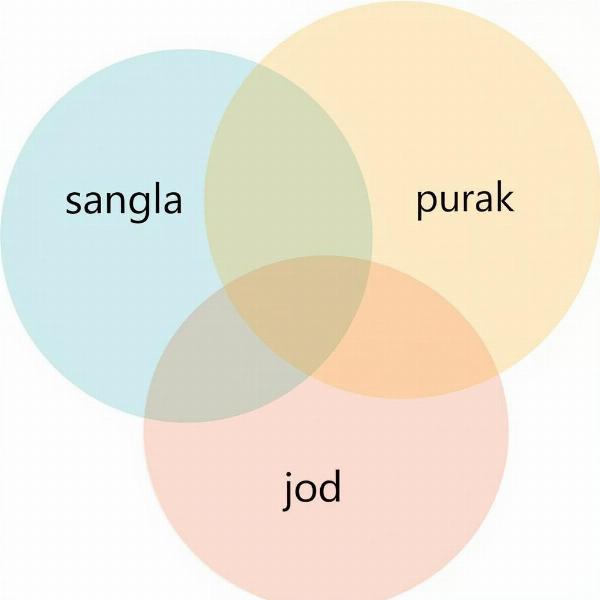Sangla, a word often encountered in legal and official contexts, can be confusing for non-native Hindi speakers. Understanding its meaning and usage is crucial for navigating various situations, especially when dealing with documents or official procedures. This article delves into the sangla meaning in hindi, exploring its various interpretations and providing practical examples to clarify its usage.
Understanding the Core Meaning of Sangla (संग्लन)
Sangla (संग्लन) in Hindi primarily means “attachment” or “annexure.” It refers to a supplementary document or item attached to a main document, providing additional information or evidence. Think of it as an add-on that complements the primary document, offering a more complete picture. This could be anything from a supporting document in a legal case to an additional page of specifications for a product. The word itself evokes a sense of connection and addition, signifying something that completes or expands upon the main subject.
Sangla in Legal and Official Contexts
In legal settings, sangla is frequently used to refer to evidence presented in support of a claim or argument. This could include photographs, witness statements, or other documents relevant to the case. Similarly, in official correspondence, sangla may refer to additional forms, certificates, or any supplementary material required for a particular application or process. Understanding the specific context is key to accurately interpreting the meaning of sangla. For example, a “sangla” attached to a property deed might be a map outlining the boundaries of the land.
Different Contexts, Different Meanings: Exploring the Nuances of Sangla
While “attachment” and “annexure” are the most common translations, sangla can also take on slightly different meanings depending on the context. It can sometimes be used to refer to an “appendix” in a book or report, providing supplementary information that is not essential to the main text. In other situations, it might be used more broadly to describe anything that is “attached” or “connected” to something else, although this usage is less common than the “attachment” or “annexure” meaning.
Using Sangla Correctly: Practical Examples
To illustrate the usage of sangla, consider these examples:
- Legal: “कृपया इस आवेदन पत्र के साथ आवश्यक संग्लन संलग्न करें।” (Please attach the necessary sangla with this application form.)
- Official: “इस रिपोर्ट के संग्लन में विस्तृत आंकड़े दिए गए हैं।” (Detailed statistics are provided in the sangla to this report.)
- Academic: “पुस्तक के संग्लन में अतिरिक्त जानकारी उपलब्ध है।” (Additional information is available in the sangla of the book.)
These examples demonstrate how sangla is used in different situations, always referring to something attached or appended to a main item.
Sangla vs. Other Similar Terms
While sangla often overlaps with terms like “purak” (supplement) or “jod” (attachment), there are subtle distinctions. Sangla typically implies a more formal or official attachment, while “purak” can be used in a broader sense. Similarly, “jod” might be used for physical attachments, while sangla is often used for documents or information. Understanding these nuances helps to use the correct term in the appropriate context.
 Sangla vs. Other Similar Terms
Sangla vs. Other Similar Terms
Conclusion: Mastering the Meaning of Sangla
Understanding the sangla meaning in hindi is essential for clear communication in various settings. Whether you’re dealing with legal documents, official correspondence, or academic texts, recognizing the nuances of this word will ensure accurate interpretation and effective communication. This article has provided a comprehensive guide to understanding sangla, enabling you to use it confidently and correctly in your own interactions.
FAQ:
- What is the most common meaning of sangla? The most common meaning of sangla is “attachment” or “annexure.”
- Is sangla only used in legal contexts? No, sangla can be used in various contexts, including official, academic, and even everyday situations, although it is most common in formal settings.
- What is the difference between sangla and purak? While both refer to additions, sangla typically implies a more formal or official attachment, while purak can be used more broadly.
- Can sangla be used to refer to a physical attachment? While possible, “jod” is more commonly used for physical attachments, whereas sangla often refers to documents or information.
- How can I use sangla correctly? Refer to the practical examples provided in the article to learn how to use sangla in different contexts.
Meaning-Hindi.in specializes in providing accurate and culturally sensitive Hindi translation services. We offer a range of services, including business and legal document translation, technical translation, website localization, and academic translation. Whether you need a quick translation or a specialized service, our team of expert linguists can help. Contact us today at [email protected] or call us at +91 11-4502-7584. Meaning-Hindi.in is your trusted partner for all your Hindi translation needs.